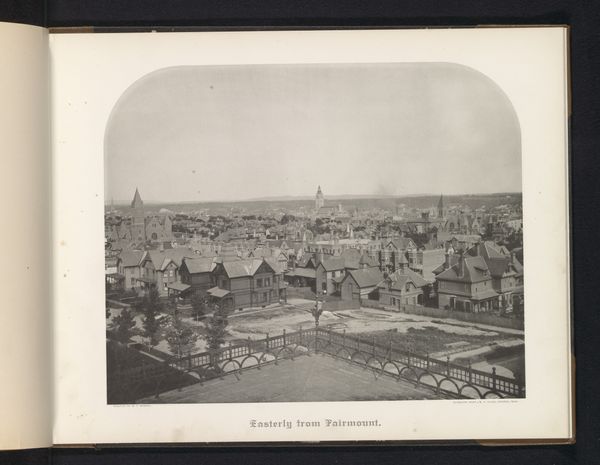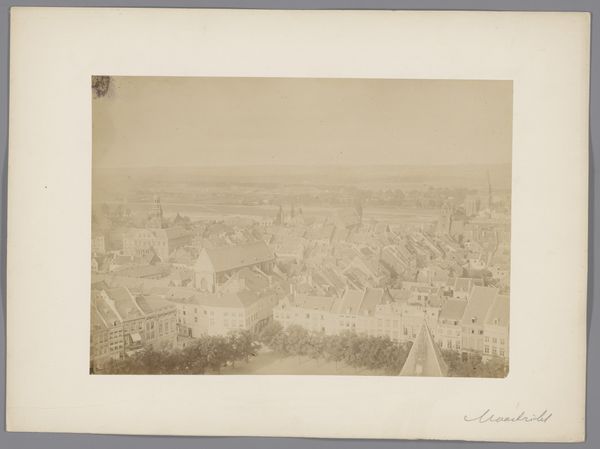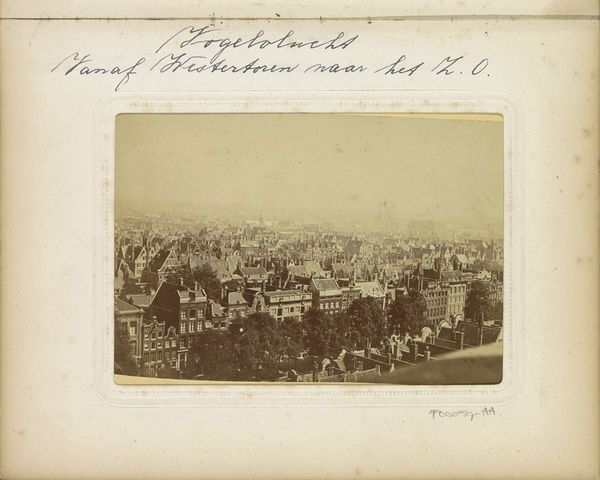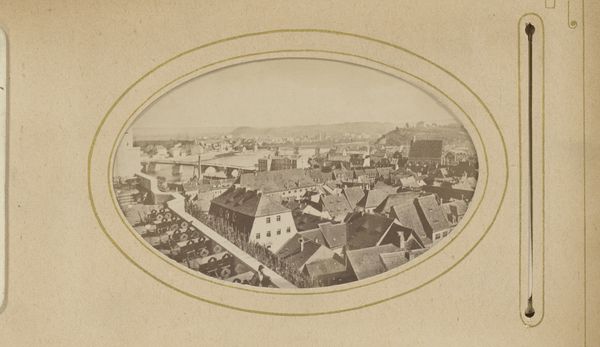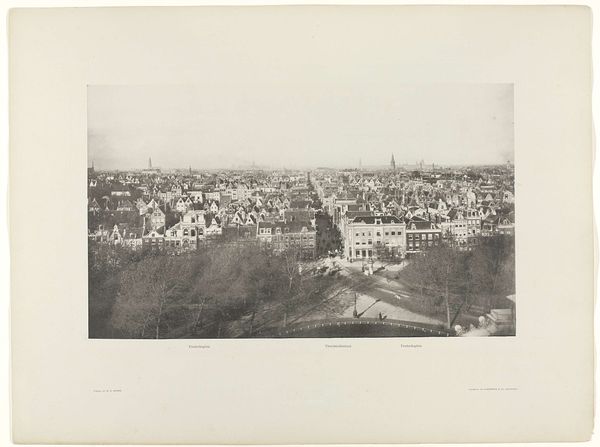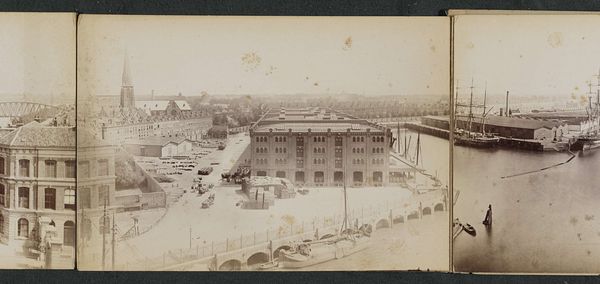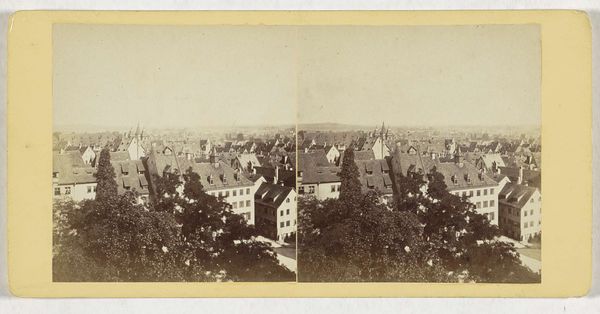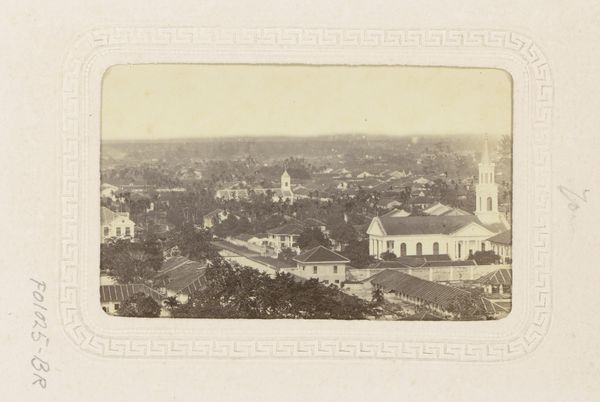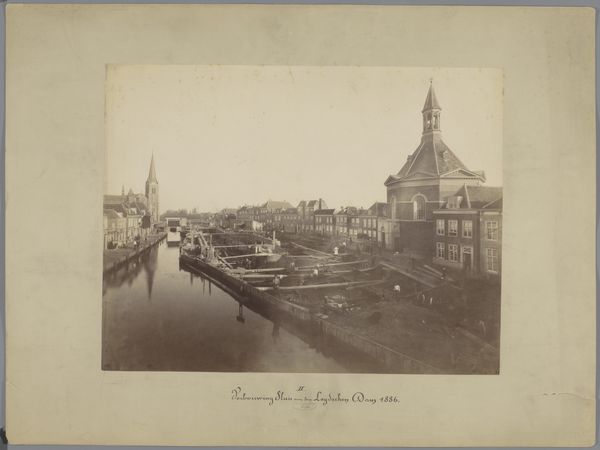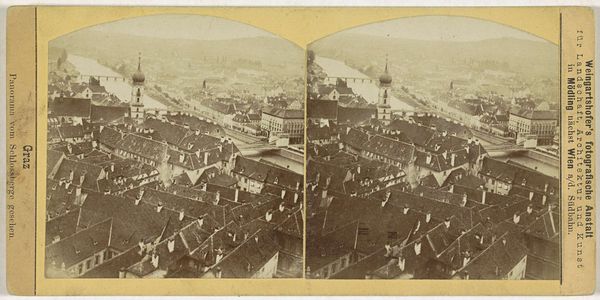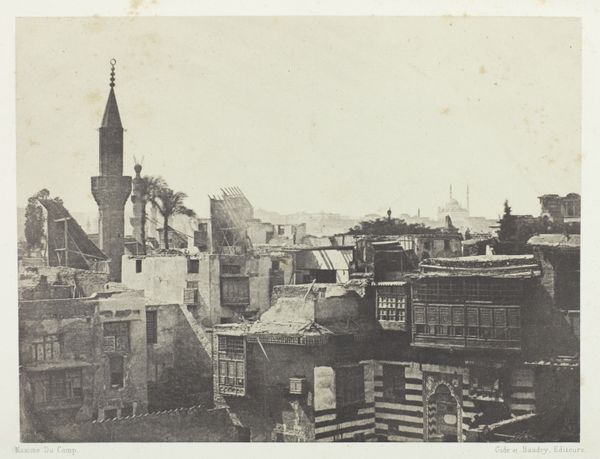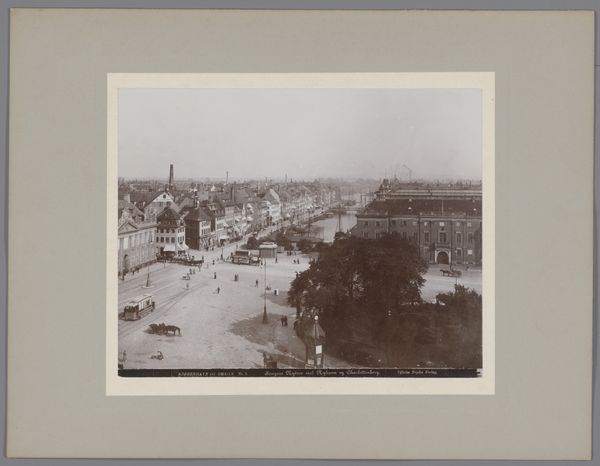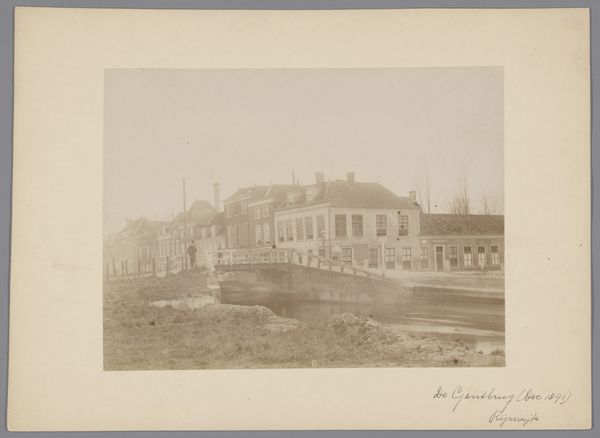
photography
#
pictorialism
#
landscape
#
photography
#
cityscape
#
watercolor
Dimensions: height 141 mm, width 694 mm, height 235 mm, width 864 mm
Copyright: Rijks Museum: Open Domain
Editor: This is "Gezicht op Kopenhagen vanaf de Kerk van de Verlosser," a photographic cityscape made sometime between 1860 and 1900 by J. Salmonsen. It's divided into four panels and bathed in sepia tones. What strikes me most is its almost clinical precision—every building meticulously rendered. What do you see in this piece? Curator: Structurally, the division into four panels introduces a fascinating element of fragmentation. Note how the perspective subtly shifts across each panel. This manipulation disrupts a unified viewing experience. Consider how this fracturing impacts our perception of Copenhagen as a coherent entity. Editor: So, it's not just a straightforward panoramic view? The structure is part of the meaning? Curator: Precisely. The subtle tonal variations and contrasts within each panel also command attention. Light and shadow aren’t used naturalistically but rather to accentuate the architectural forms, lending a geometrical emphasis to the cityscape. It asks us to consider the relationship between representation and reality. Editor: I hadn't thought about the panels in terms of fracturing the image. Now I see how that segmentation adds to the impact. Curator: Indeed. And consider how the absence of human figures directs our focus solely onto the built environment, emphasizing the formal qualities of the city itself. Salmonsen isolates architecture. What does the intentional reduction of lived life and embrace of aesthetic form contribute to the scene’s character? Editor: It almost feels like the city exists as an art object in and of itself. I learned a lot from this! Thank you! Curator: My pleasure. This interplay between technique and representation yields enduring questions about the nature of seeing and the artifice of photography.
Comments
No comments
Be the first to comment and join the conversation on the ultimate creative platform.
